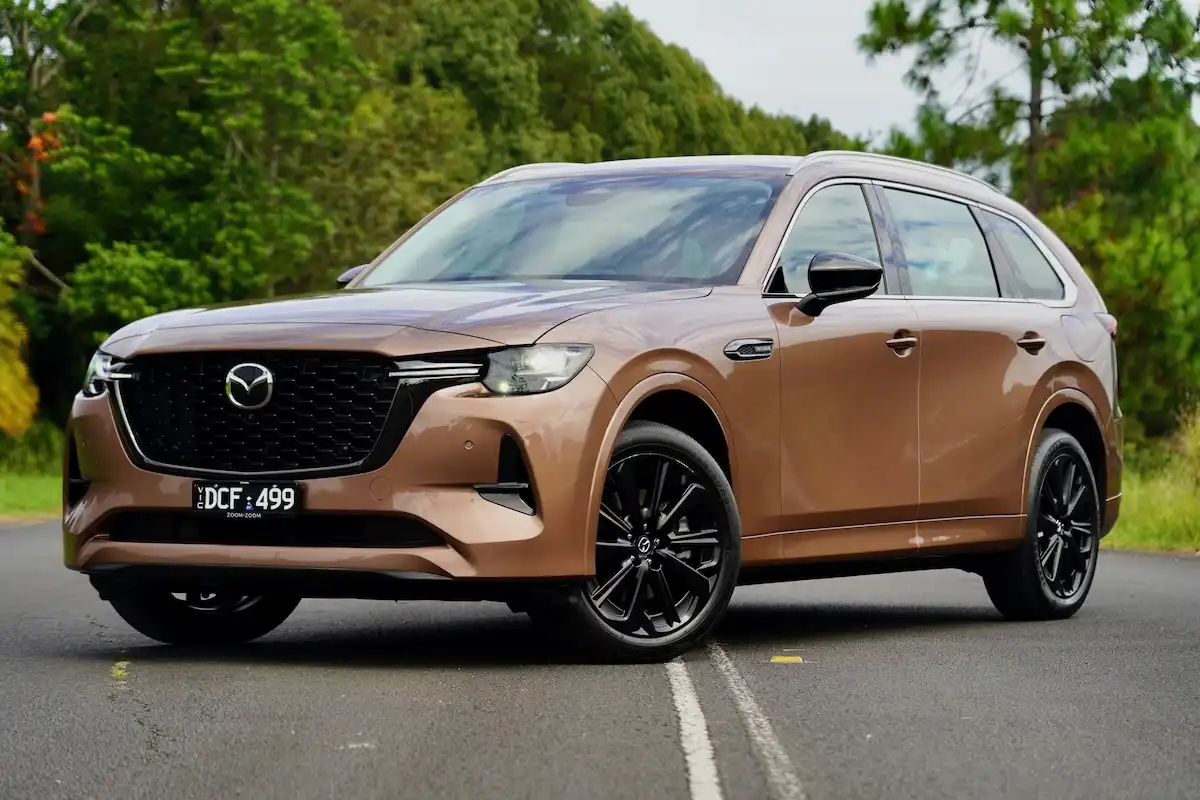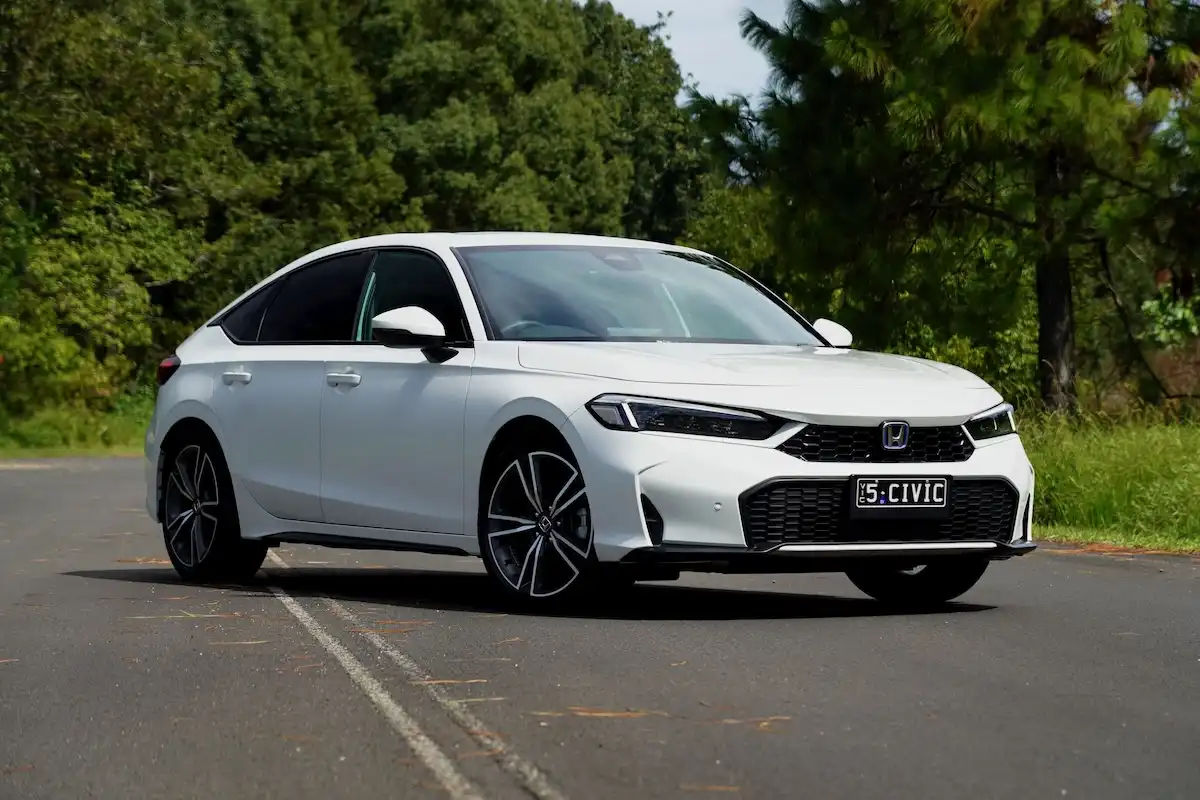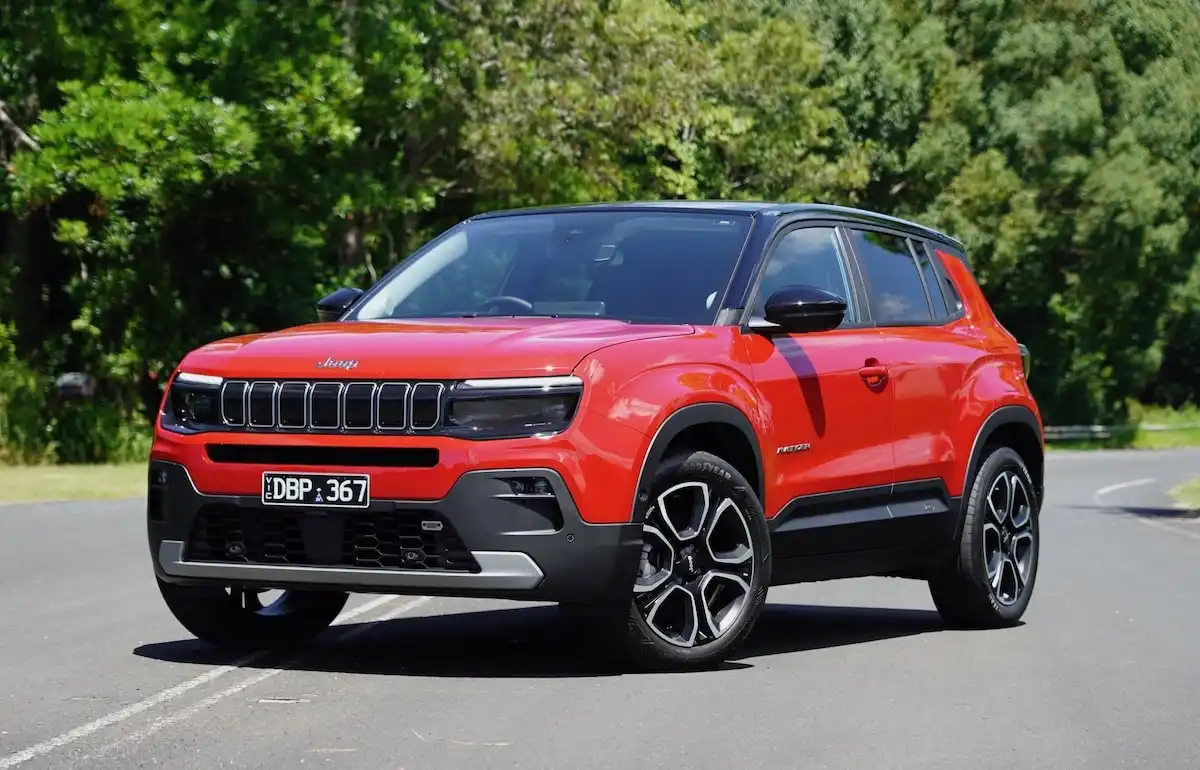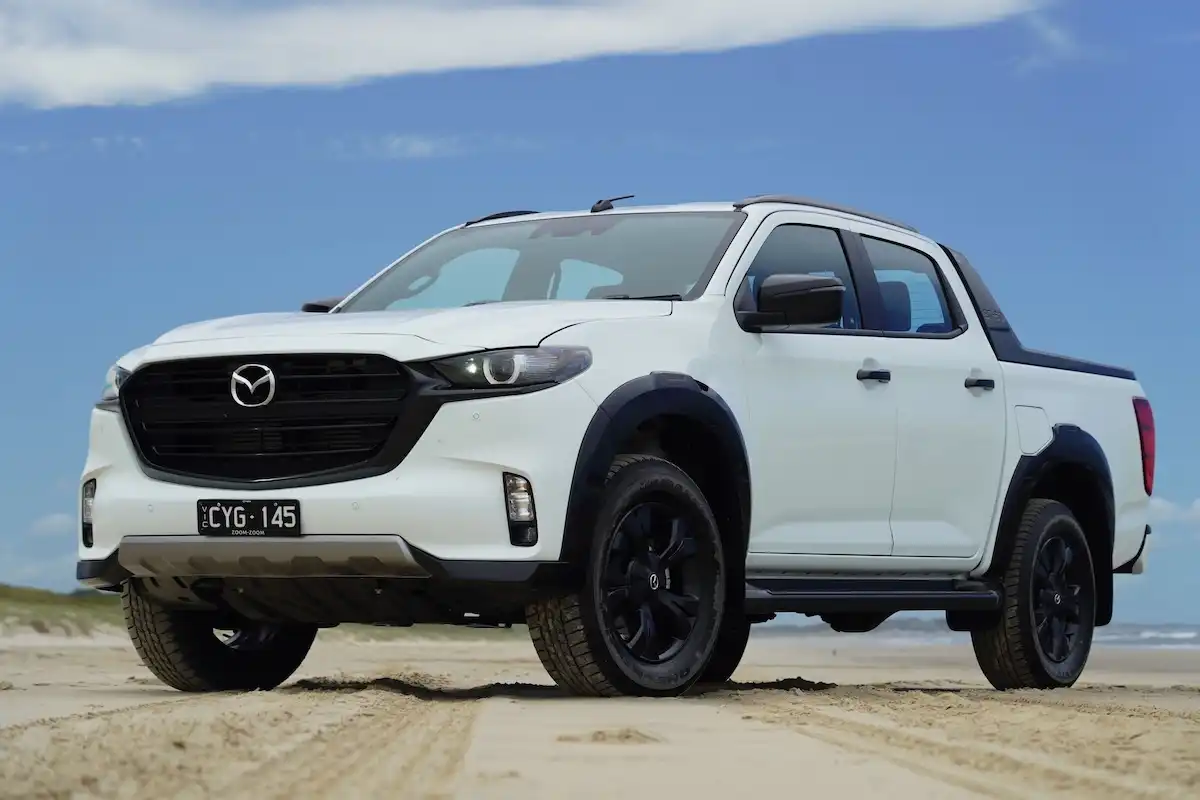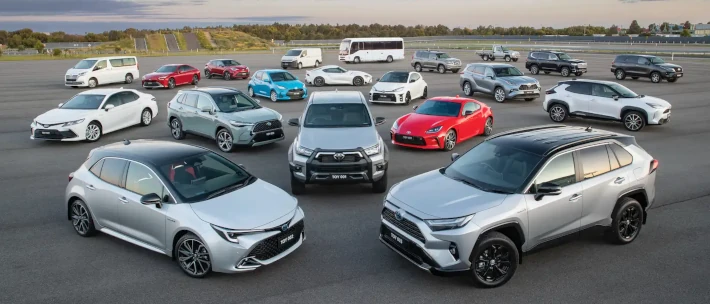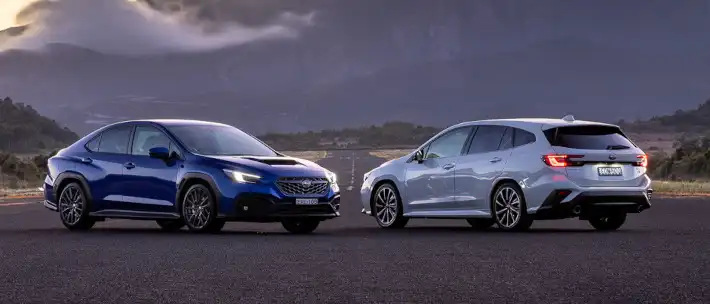The 70 Series remains a cult-classic hit here in Australia for a few simple reasons. While it might not match its competitors in terms of technology and luxuriousness, Toyota’s approach in making it perhaps the definitive tough, rugged and capable off-road workhorse has ensured sales numbers won’t dip, in spite of the fact that it is nearly four-decades old.
Want to find out what all the fuss is about? Read on to find out.
Starting Price: $68,990
OnlineAuto Savings: $2,600
Toyota Landcruiser 70 Series (WORKMATE) Specifications
| Model Date | 2021 |
| Make | TOYOTA |
| Model | LANDCRUISER 70 SERIES |
| Series | VDJ76R |
| Variant | WORKMATE |
| Body | 4D WAGON |
| Fuel type | DIESEL |
| Transmission | 5 SP MANUAL |
| Drive | 4x4 |
| Engine | TCDI |
| Engine capacity | 4461 |
| Engine configuration | DUAL OVERHEAD CAM / 32 valves |
| Engine RPM | 3400 / 1200 |
| Cylinders | DTV8 |
| Torque | 430 |
| KW | 151 |
| Fuel tank size | 130.0 |
| Fuel usage specs | 10.7 / 0.0 |
| CO2 | 281 |
| ANCAP security rating | 5 |
For more details and other variants, check Toyota Landcruiser 70 Series car page.
Need help narrowing down your choices?
Get in touch with one of our Car Buying Specialists today
Request a quoteHow Much Does It Cost?
The Toyota Landcruiser 70-Series lineup kicks off at $68,990 for the base WorkMate model, while the step-up GXL variant is priced from $72,190.
How Much Can OnlineAuto Save You?
Using OnlineAuto’s car buying service, you could save an average $2,600 by sourcing one of our car specialists to help you find the best value model for you.
What Features Does the Toyota Landcruiser 70 Series Have?
The Landcruiser 70 Series comes with a relatively spartan approach to features, with Toyota packing most of the value into the tough underpinnings, rather than occupant-focussed features. The features list includes for the base-spec Workmate variant in a single-cab or cab-chassis configuration includes 16-inch steel wheels, active traction control, air conditioning all-weather floor mats, a 6.1-inch colour touchscreen display with satellite navigation, bluetooth, Toyota Link, two-speaker audio system, moulded front bumper, halogen headlights, steel side steps, an air-intake snorkel, energy-absorbing steering column, as well as a host of safety equipment as standard.
Stepping up to the GLX variant adds 16-inch alloy wheels, chrome bumpers, chrome radiator grilles, aluminium side steps, a power antenna, chrome roof drip rails, cloth seat trim and floor carpets, as well as a locking differential on the front and rear axles.
Range Features:
- 16-inch steel wheels
- Air intake snorkel
- Four-wheel drive with active traction system
- 6.1-inch colour touchscreen display with sat nav & bluetooth
- 16-inch alloy wheels (GXL variant)
- Front & rear axle locking differentials (GXL variants)
Toyota Landcruiser 70 Series (WORKMATE) Colours
| French Vanilla | Silver Pearl |
| Graphite | Merlot Red |
| Sandy Taupe | Midnight Blue |
Is it Comfortable to Drive?
The Toyota Landcruiser 70 Series is a back-to-basics approach to motoring that prioritises the ability to go anywhere in a reliable fashion over almost any other concerns. As a result, it’s not necessarily the most comfortable car to drive on the urban commute, and can prove problematic in tight spaces, but it’s unlikely that you’re purchasing a 70 Series to hang around town.
When you head into the great outdoors and the sealed road stops, that’s where the 70 Series really comes into its element. There are few cars that can handle the worst of what nature provides with the composure and confidence that Toyota’s 70 Series can. Powered by a 4.5-litre bulletproof turbocharged diesel engine, there’s 151kW of power and 430Nm of torque on offer to help you navigate over whatever you like, combined with a suspension system that feels like it could absorb earthquakes and a handsome amount of ride height.
The single downside of owning a 70 Series is the gearing that prioritises helping you through off-road tracks, rather than accommodating highway speeds. Low gearing helps you put power down at lower speeds for attacking an off-road hill climb, but becomes stressed and strained the faster you go. As a result, a long trip in the 70 Series is less enjoyable than some of its peers due to the sheer amount of road and engine noise that enters the cabin.
Something this capable off road can’t be a peach on the road, so at least Toyota has its priorities right in this regard, because there’s few places the 70 Series can’t reach.
Is it Practical and Spacious?
A 70 Series Landcruiser takes a utilitarian approach to occupant space and comfort, rather than applying anything resembling luxury; after all, that’s what has made the 70 Series a cult-classic. Inside, there’s a huge amount of space in the front of the cabin, with bucket loads of headroom, however, passenger legroom is somewhat limited due to the bulky dash configuration. Depending on your preference, the 70 Series can be configured as either a single cab, double cab-chassis, wagon or troop carrier format, each of which has its perks and setbacks in terms of practicality, but offers those with particular needs a specialist format for their work.
Is it a Capable Workhorse?
You bet it is. Perhaps the most significant fact about the 70 Series is that it’s almost unbreakable, and has been a reliable workhorse for people in the most remote of areas for more than 36-years now. With a live front axle, coil springs, dampers and anti-roll bar up front, the 70 Series can handle the worst of what nature can throw in its way, and thanks to the 450Nm push, it’s got more than enough power on tap.
Toyota says the Landcruiser 70 Series has a braked towing capacity of 3500kg - unbraked stands at 750kg - while the payload is rated at 1220kg, meaning that it matches all its important competitors in terms of towing and payload capacity. Keep in mind that the payload capacity drops for the wagon variant, which Toyota puts at 780kg.
Is it Safe?
As of 2016, the Landcruiser 70 Series has been awarded ANCAP’s maximum Five Star Rating. Toyota packages a host of safety gear as standard in even the base WorkMate model, including anti-lock brakes, an energy-absorbing steering column, active traction control, hill-start assist, vehicle stability control, driver and passenger airbags as well as a curtain shield and knee airbags for the driver.
Is it Fuel Efficient?
Toyota says the Landcruiser 70 Series has an official combined cycle range of 10.7L per 100km, which is relatively thirsty for a diesel powertrain, and is less economical than a number of its competitors. Real-world driving conditions will likely see this figure rise, too, but it’s unlikely that fuel economy is a top priority for those looking at the 70 Series.
Our Verdict: Is the Landcruiser 70 Series Worth it?
There’s a damn good reason the Landcruiser 70 Series has cemented itself as an Australian cult-hero, and Toyota doesn’t seem interested in any serious upgrades for the Landcruiser in the near future because of just how capable this current generation is. It’s barely changed in the near three-decades it's been on sale here, and the fact that it’s one of the best-sellers in its category speaks volumes of how capable the 70 Series is.
If you’re looking for a tough and reliable workhorse that will get you to Timbuktu - and back, look no further than the Toyota Landcruiser 70 Series
Get a free quote and see how much OnlineAuto car broker can save you on your next car, or call us on 1300 719 925
Five Specs You Need to Know
- 180L fuel tank in Troop Carrier; 130L for the rest
- 3500kg braked towing capacity (750 unbraked)
- 1220kg payload; 770 for wagon variant
- Front & rear rigid live axle; coil springs front, semi-elliptic leaf springs rear
- 16-inch steel wheels standard (alloys reserved for GXL)
Pros
- Simple, rugged and quality engineering
- Go anywhere off-road performance
- Long-term reliability
Cons
- Spartan interior and features list
- Locking differentials remain optional extra for base model
- Low gearing proves troublesome at highway speeds
Toyota Landcruiser 70 Series Competition
Toyota Landcruiser 70 Series |
VS |
Nissan Navara |
| Volkswagen Amarok | ||
| Mazda BT-50 | ||
| Isuzu D-MAX | ||
| Mercedes-Benz G |

